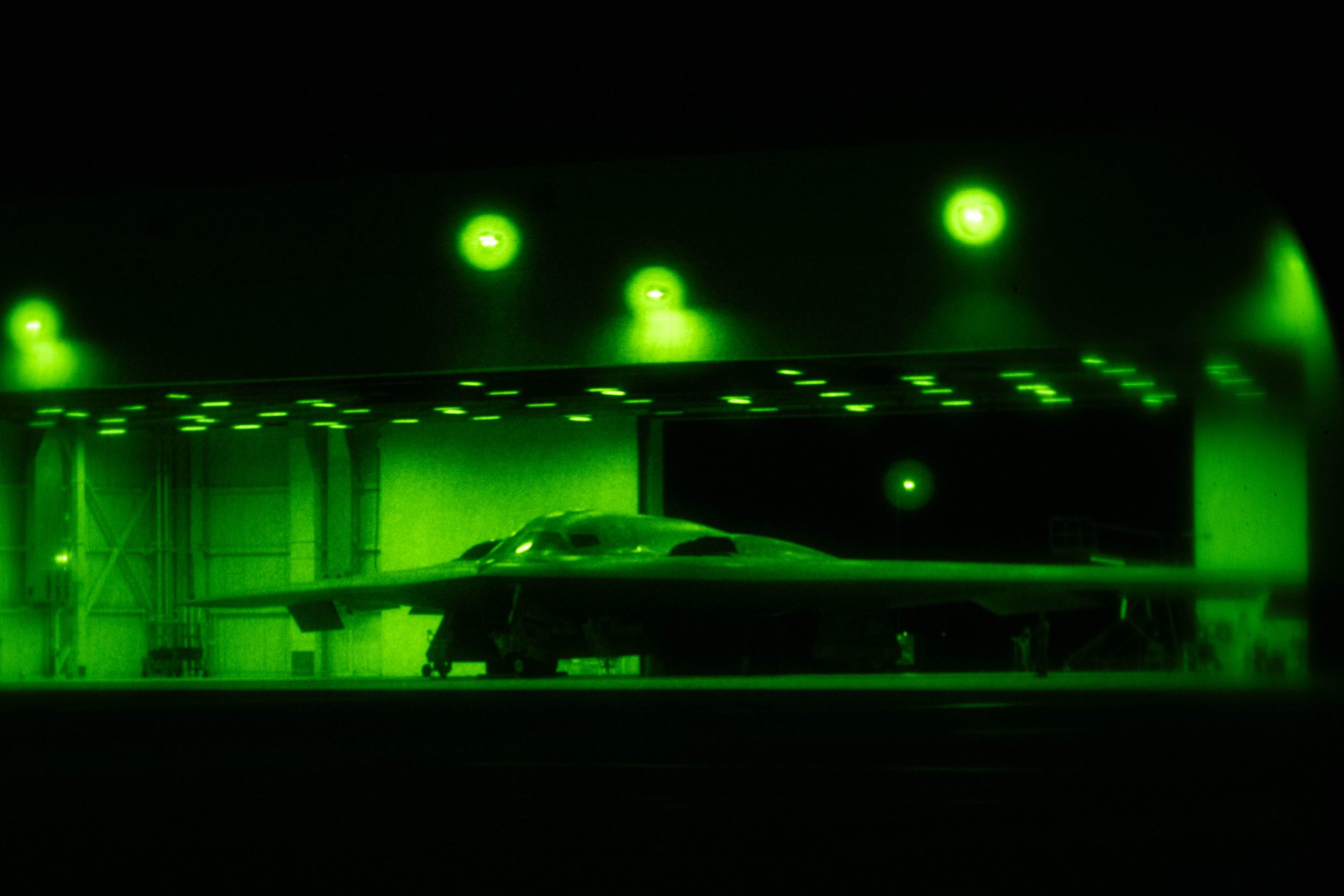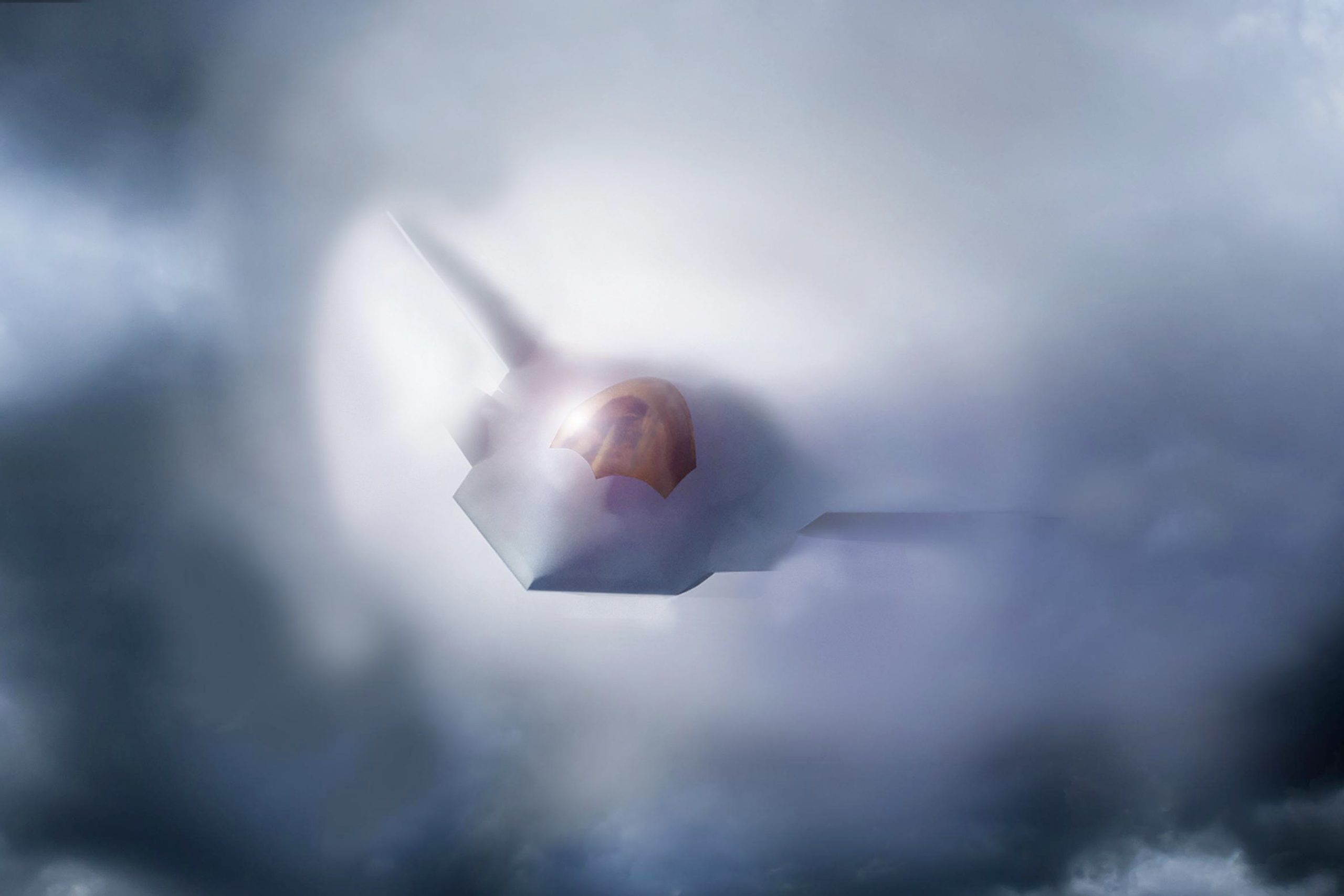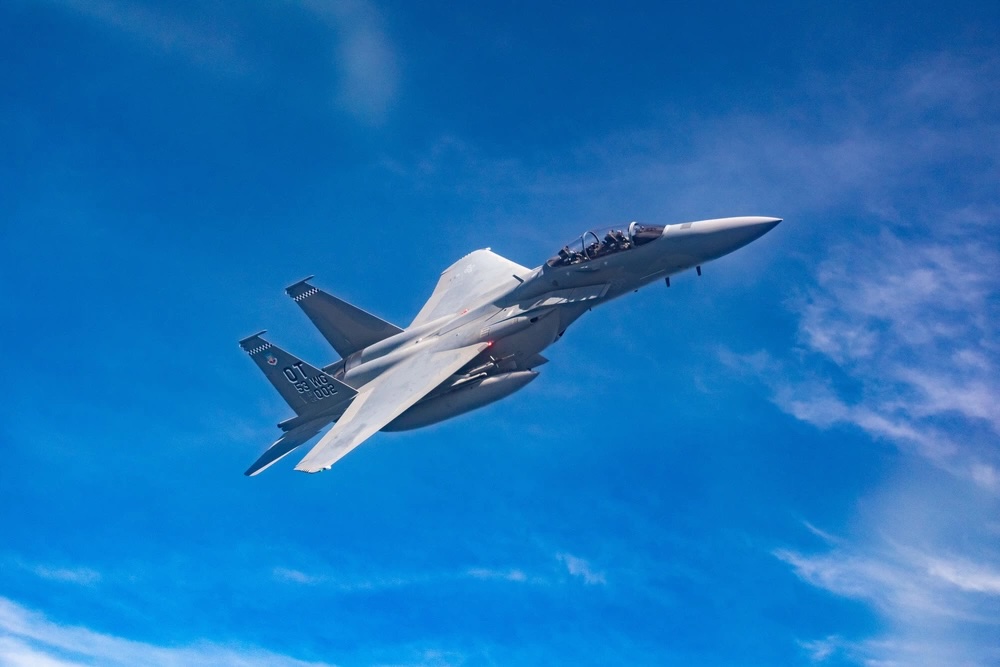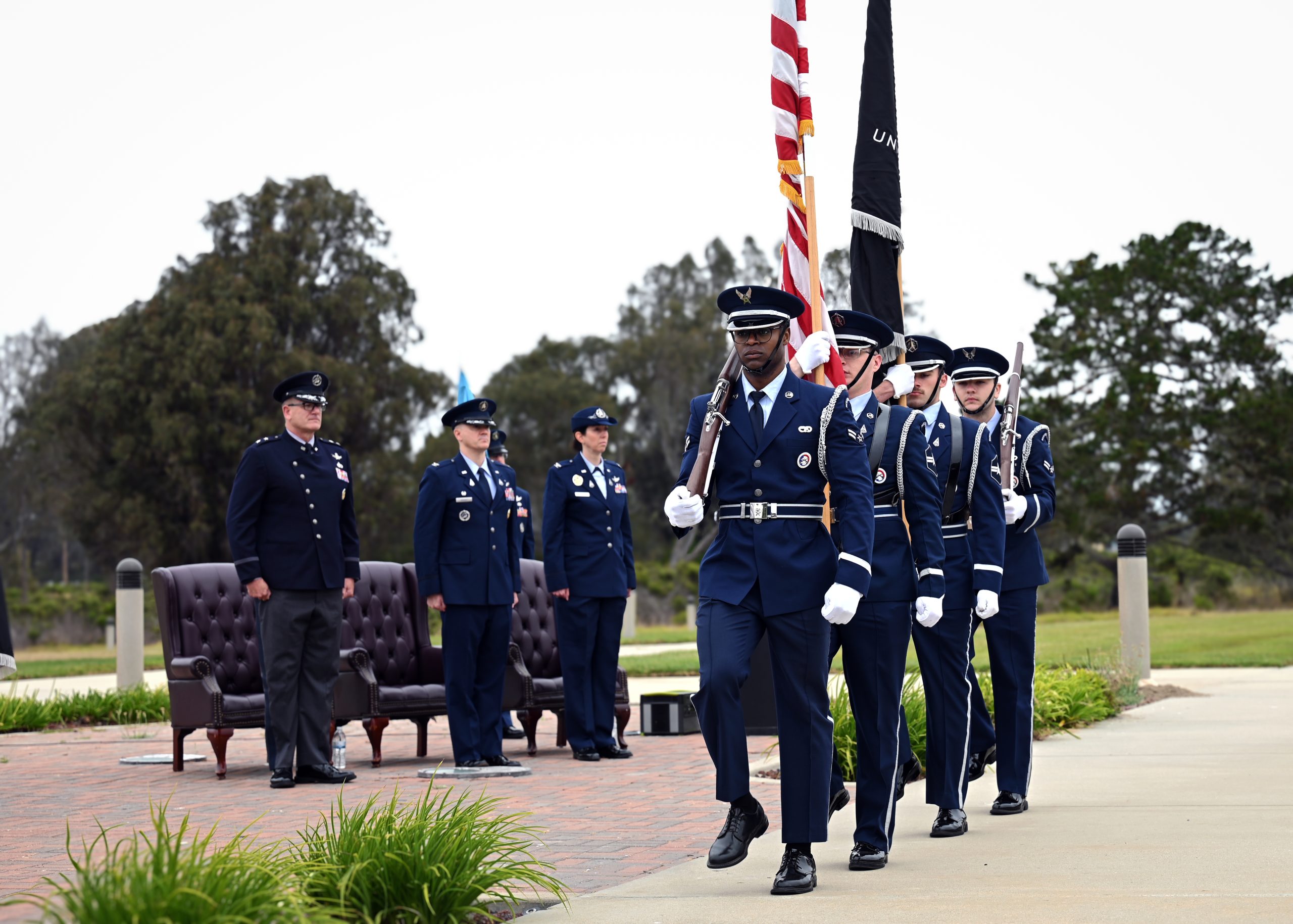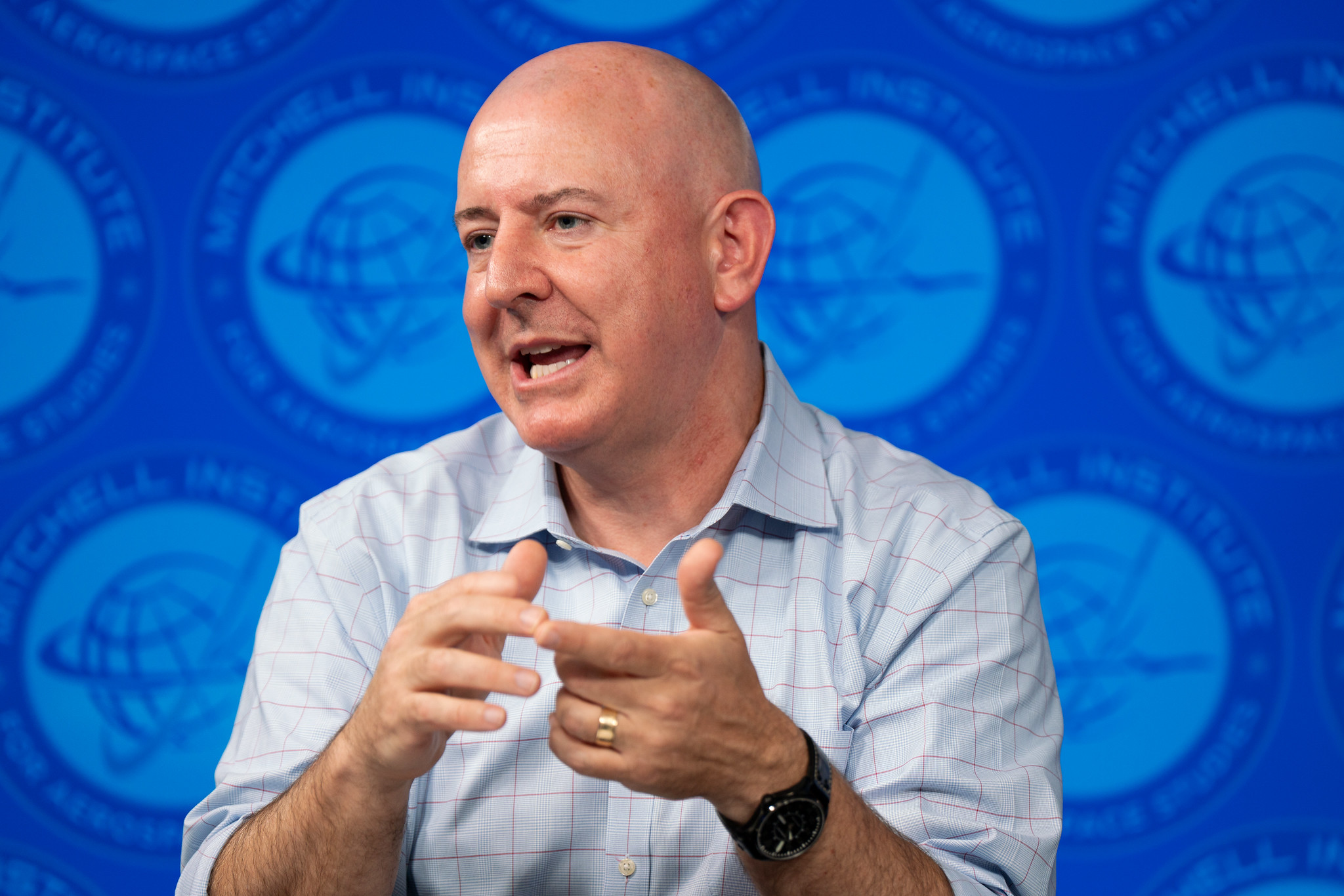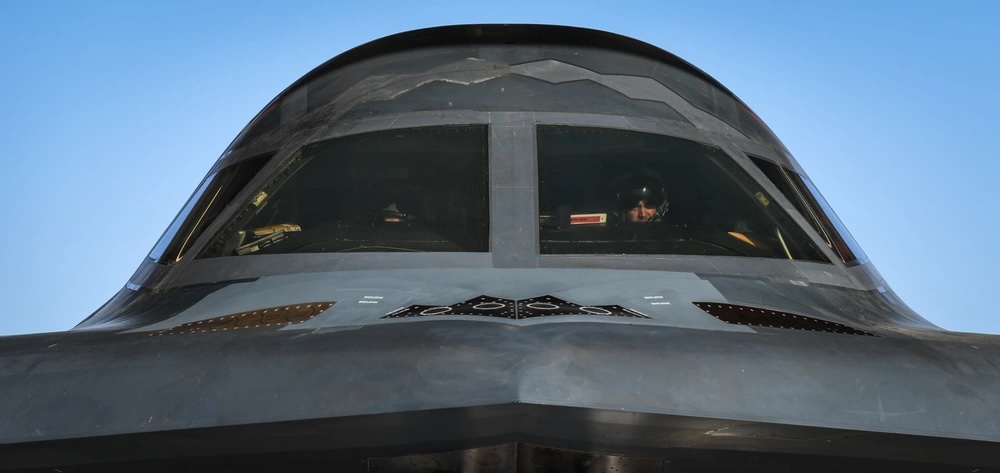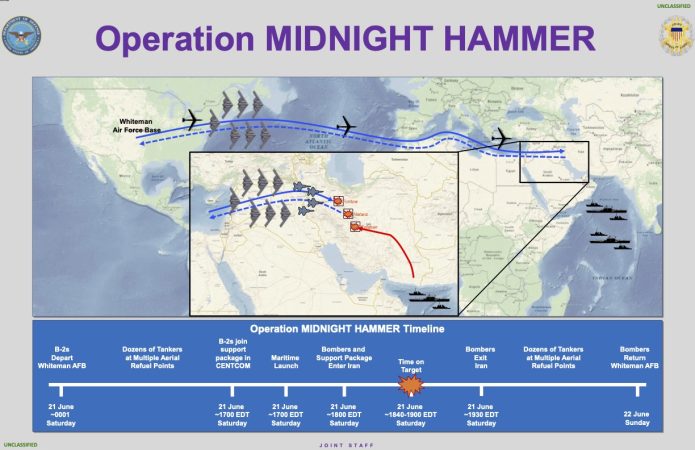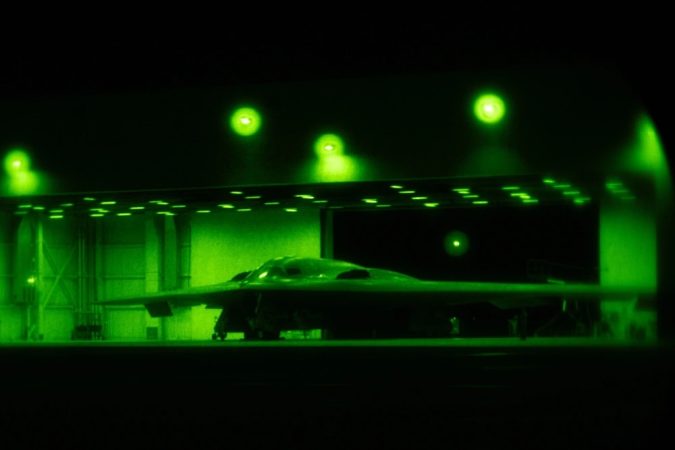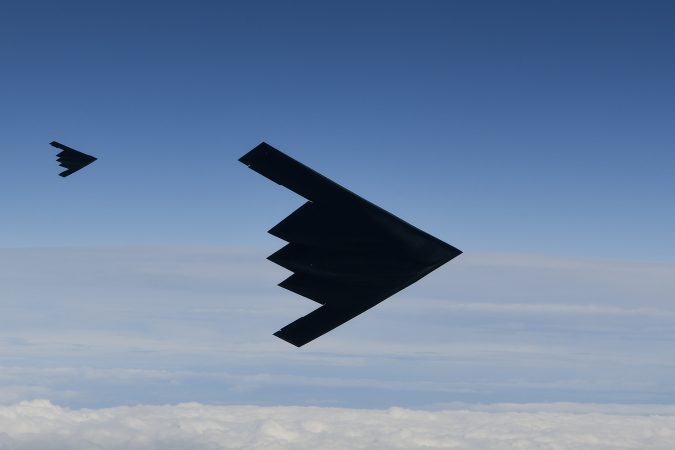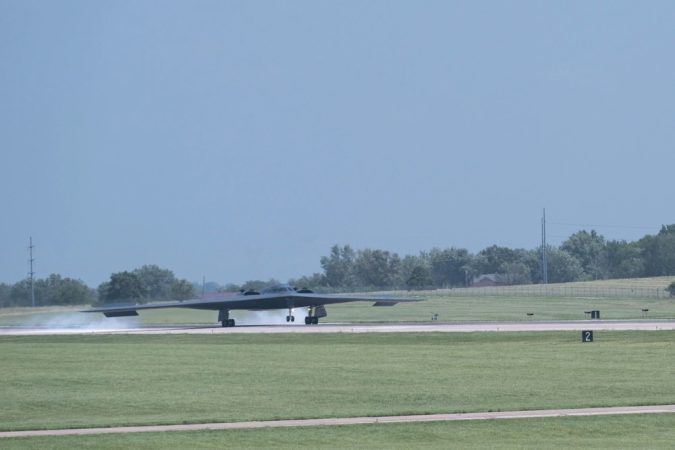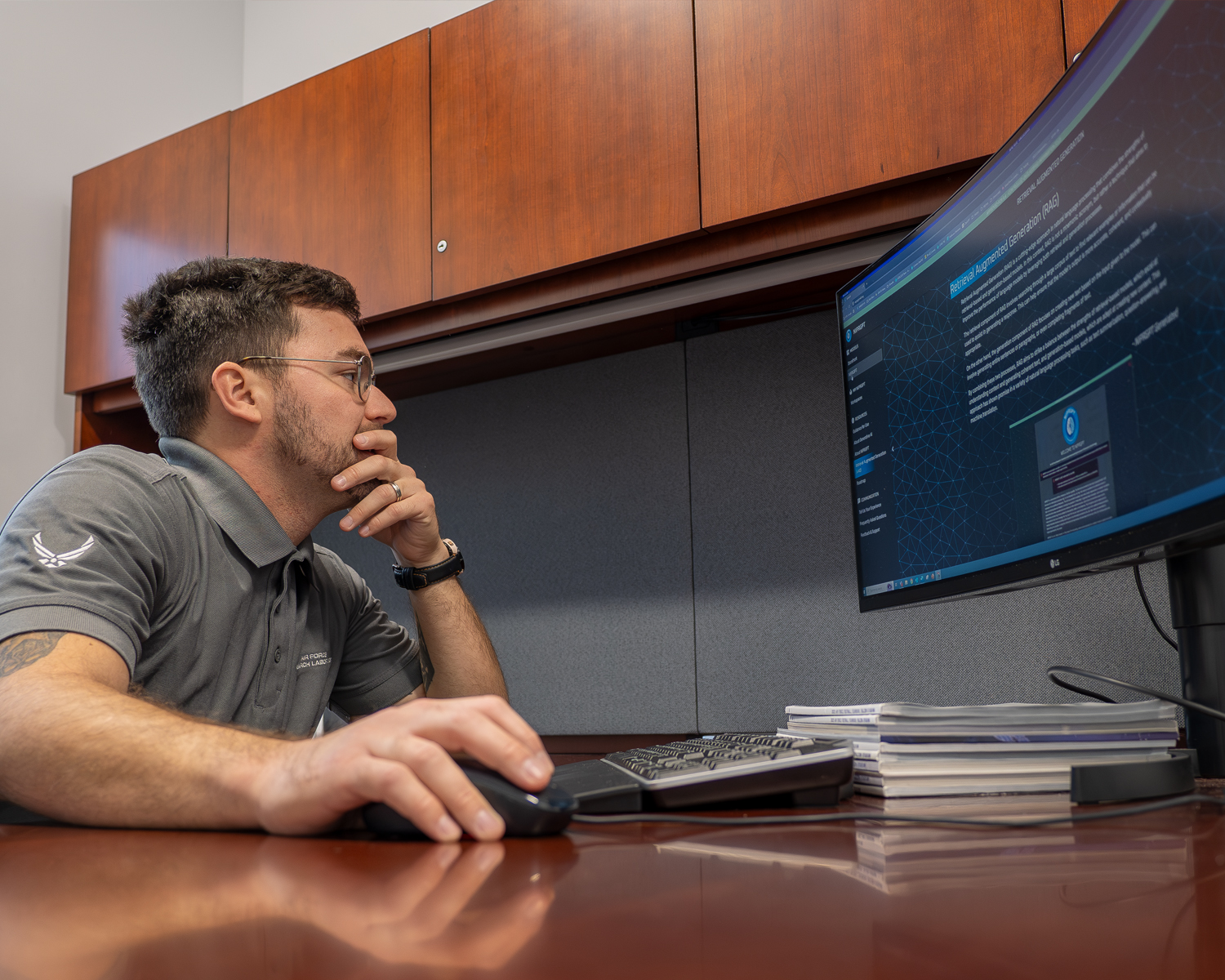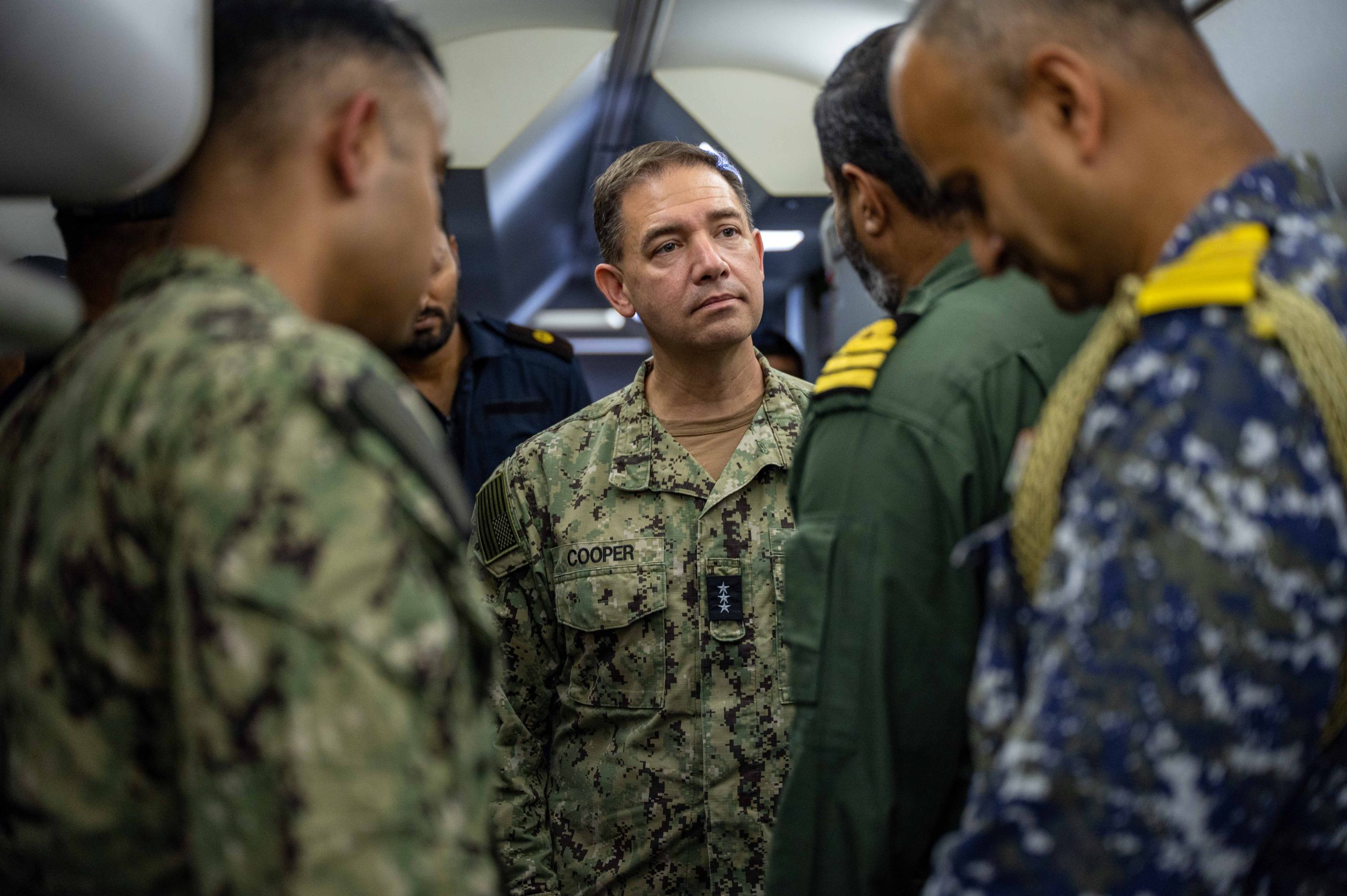The 36-hour operation by the U.S. military to fly deep into Iranian airspace and drop massive bunker-buster bombs on a heavily fortified nuclear complex traces its roots to the work of intelligence analysts over 15 years ago, according to a new account from Chairman of the Joint Chiefs of Staff Air Force Gen. Dan Caine.
On June 22, seven U.S. Air Force B-2 Spirit stealth bombers dropped 12 30,000-pound bombs on the Fordow enrichment complex, which is built inside of a mountain. But this was no hasty operation. Rather, the U.S. began grappling with the challenge of how to destroy Fordow soon after Iranians began building it.
Iran began working on Fordow in 2006, experts on the Iranian program say. In 2009, an analyst at the Defense Threat Reduction Agency was shown photographs of a major construction project in the mountains of Iran.
The DTRA is a little-known part of the Department of Defense that is charged with countering weapons of mass destruction and which is headquartered in Fort Belvoir, Va., a short distance from Washington, D.C.
Soon after the first analyst started, another intelligence official was brought in.
“For more than 15 years, this officer and his teammate lived and breathed this single target: Fordow, a critical element of Iran’s nuclear weapons program,” Caine said. “He watched the Iranians dig it out. He watched the construction, the weather, the discard material, the geology, the construction materials, where the materials came from. He looked at the vent shaft, the exhaust shaft, the electrical systems, the environmental control systems—every nook, every crater, every piece of equipment going in, and every piece of equipment going out.”
The Fordow site is believed to have begun enriching uranium in late 2011. While the Iranians say their program is entirely peaceful, Western officials say the enrichment was part of a complex set of steps that Iran was taking to position itself to make nuclear weapons. In March, the U.S. intelligence community told Congress that Iran’s Supreme Leader had not yet given the go-ahead to make a bomb.
“In the past year, there has been an erosion of a decadeslong taboo on discussing nuclear weapons in public that has emboldened nuclear weapons advocates within Iran’s decision-making apparatus,” U.S. intelligence officials warned in a report to Congress.
The U.S. analysts had already determined that Fordow was part of Iran’s option for becoming a nuclear weapons state.
“You do not build a multilayered underground bunker complex with centrifuges and other equipment in a mountain for any peaceful purpose,” Caine said.
The analysts faced a challenge: how would they approach blowing up a facility inside a mountain?
“They began a journey to work with industry and other tacticians to develop the GBU-57,” Caine said. The bomb has a warhead encased in steel and is fused to blow up an estimated 200 feet underground.
The weapon has been under development since 2004 by the Air Force and DTRA, but is known to have been refined since then. During Caine’s press conference, officials showed video of a December 2020 test of the weapon—the Massive Ordinance Penetrator, or MOP.
“In the beginning of its development, we had so many PhDs working on the MOP program doing modeling and simulation that we were quietly and in a secret way the biggest users of supercomputer hours within the United States of America,” Caine claimed.
“They tested it over and over again, tried different options, tried more after that. They accomplished hundreds of test shots and dropped many full-scale weapons against extremely realistic targets for a single purpose: kill this target at the time and place of our nation’s choosing,” the chairman continued.
Days into Israel’s air war on Iran launched on June 12, Iran began to cover the ventilation shafts—two of which would become the bombs’ entry points—with concrete, Caine said.
“The planners had to account for this. They accounted for everything,” he said.
On June 21, the seven B-2s piloted by 14 Airmen, from the Active-Duty Air Force and the Missouri Air National Guard, and ranging in rank from captain to colonel, took off from Whiteman Air Force Base, Mo. They headed east over the Atlantic and onward to the Middle East, where they met up with fighters. Caine said a crew member told him afterwards by video conference, that it “felt like the Super Bowl—the thousands of scientists, Airmen, and maintainers all coming together.”
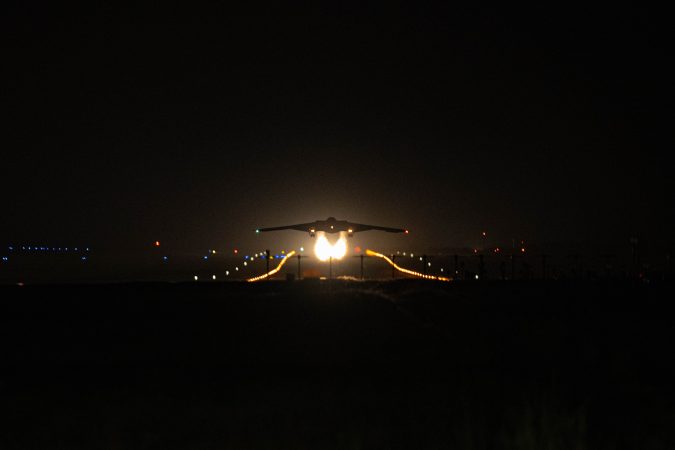
“We think, we develop, we train, we rehearse, we test, we evaluate every single day—and when the call comes to deliver, we do so,” Caine said.
“There’s a lot of success to go around here,” added Air Force Chief of Staff Gen. David W. Allvin during a Senate hearing June 26, referring to the Airmen involved in the operation. “They may not have fully understood the geostrategic impact it had, but they knew that was their job to do, and they knew that the mission depended on them. … The Air Force makes the ridiculously complex look routine, but that doesn’t come without effort.”
The fighters led the strike package, officials have said, and launched some 30 munitions at Iranian surface-to-air systems, though none engaged U.S. forces.
The B-2s attacked Fordow, where six bombs were dropped on each of the two main ventilation shafts, first to destroy the concrete covers and then the next four to penetrate the facility. The sixth was a “flex” weapon in case of a weapons failure. Two MOPs were also dropped on the Natanz complex.
The GBU-57s operate through an “overpressure” effect, a shockwave generated by the bomb’s explosion when it is deep underground. The bomb’s fuses are calibrated so that it does not explode until it has penetrated the rock and entered a subterranean facility.
Caine pointed to satellite imagery of the attack and the test video of the weapon’s previous performance as evidence of the strike’s success.
The families of the pilots were informed of their secret mission on the evening of June 21—around the same time the world found out the United States bombed the Fordow and Natanz sites, and launched 30 Tomahawk cruise missiles at the Isfahan facility.
“The Joint Force does not do [battle damage assessment] by design,” Caine said. “We don’t grade our own homework. The intelligence community does.”
Secretary of Defense Pete Hegseth said the weapons had a “devastating effect,” as the Trump administration has tried to distance itself from a Defense Intelligence Agency report that indicated the attack may only have set Iran’s nuclear program back by a few months.
Satellite imagery showed trucks outside the Fordow facility in the days before the attack. That has raised concerns among non-governmental experts that the Iranians might be trying to cart away some of the enriched uranium and perhaps nuclear-related equipment. Hegseth said he had no information that enriched uranium had been moved from Fordow and said he believed the U.S. hit “what we wanted to hit in those locations.”
Neither Hegesth nor Caine addressed whether uranium and equipment might have been diverted away from two other sites that the U.S. targeted at Isfahan and Natanz.
There is, however, little doubt that the B-2s executed one of the biggest, more important, and most grueling airstrike missions in history. All told, 125 aircraft were involved in the mission, including refueling tankers, fourth-generation fighters, F-35s, and, according to President Donald Trump, F-22s.
“Here’s what we know following the attacks and the strikes on Fordow,” Caine said. “First, that the weapons were built, tested, and loaded properly. Two, the weapons were released on speed and on parameters. Three, the weapons all guided to their intended targets and to their intended aim points. Four, the weapons, they functioned as designed—meaning they exploded.” The chairman quoted the pilot of a trailing jet as saying, “This was the brightest explosion that I’ve ever seen. It literally looks like daylight.”
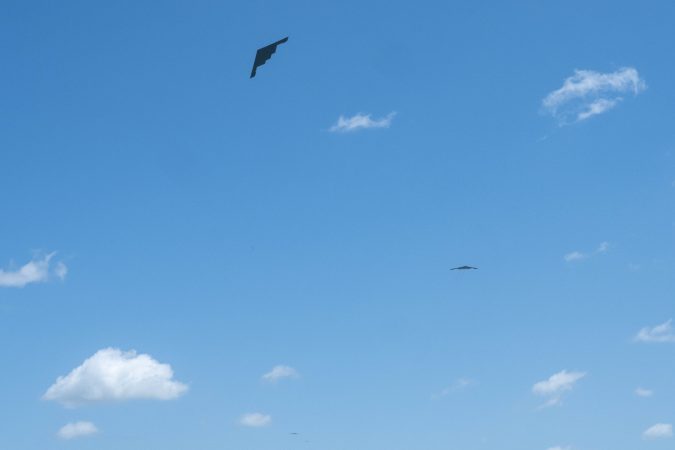
Roughly 12 hours later, the B-2 entered the landing pattern at Whiteman—one four-ship, and one three-ship. Unnoticed on the way out of the base, just after midnight on June 21 local time, they returned with local news crews staged in Knob Noster, Mo. On June 25, Army Gen. Michael “Erik” Kurilla, the head of U.S. Central Command, went to congratulate the B-2 crews and maintainers at Whiteman.
“Operation Midnight Hammer was the culmination of those 15 years of incredible work—the aircrews, the tanker crews, the weapons crews that built the weapons, the load crews that loaded it,” Caine said. “Our adversaries around the world should know that there are other DTRA team members out there studying targets for the same amount of time, and will continue to do so.”
